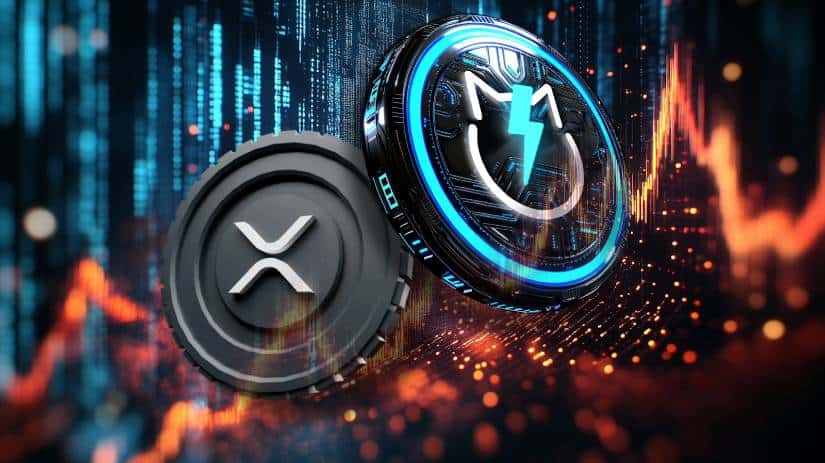Ripple CTO’s Personal Initiative to Strengthen XRPL Infrastructure with High-Performance Server
In a significant move to enhance the XRP Ledger's (XRPL) infrastructure, Ripple's Chief Technology Officer, David Schwartz, has independently deployed a high-performance server. This initiative, undertaken outside his official role at Ripple, aims to bolster network stability by providing dedicated connections for validators and critical nodes. Schwartz highlighted the server's potential to promote decentralization while warning against over-reliance on any single component. This development underscores the ongoing efforts to strengthen XRPL's robustness and scalability, which could positively impact XRP's long-term value and adoption. As of August 2025, such advancements continue to solidify XRP's position in the competitive cryptocurrency landscape.
Ripple CTO Deploys Independent Server to Strengthen XRPL Infrastructure
Ripple's Chief Technology Officer David Schwartz has taken a personal initiative to bolster the XRP Ledger's infrastructure by deploying a high-performance server. The move, unrelated to his role at Ripple, aims to enhance network stability through dedicated connections for validators and critical nodes.
Schwartz emphasized the server's role in promoting decentralization while cautioning against over-reliance on any single hub. The XRPL's design philosophy of distributed trust remains paramount, with this contribution serving as an independent reinforcement of the ecosystem's resilience.
XRP Shows Bullish Potential Amid Banking License Speculation and Technical Breakout
ChatGPT's analysis of XRP reveals a bullish technical setup above $3.05, despite reports of a 42-bank blockade attempting to thwart Ripple's banking license application. The cryptocurrency has demonstrated strong recovery signals, trading above all major exponential moving averages (EMAs) with neutral RSI readings suggesting room for further upside.
Volume expansion indicates institutional participation as XRP establishes a new trading range. The MACD histogram builds positive momentum despite bearish line crossover, creating potential for a significant directional move. Regulatory developments remain pivotal, with Ripple's banking license progress and SEC deadlines creating an inflection point between consolidation and institutional adoption momentum.
Technical indicators suggest controlled volatility characteristic of breakout patterns, with the $3.05 level now acting as psychological support. Market participants await clarity on Ripple's banking license outcome, which could catalyze the next major price movement for XRP.
XRP MVRV Ratio Signals Potential Downtrend as Death Cross Emerges
XRP faces heightened bearish pressure as its Market Value to Realized Value (MVRV) ratio crosses below the 200-day moving average—a technical pattern colloquially termed a 'death cross.' This on-chain metric, which compares XRP's market capitalization against the aggregate cost basis of holders, suggests investors are now holding unrealized losses on average.
Analyst Ali Martinez highlights the significance of this development, noting historical correlations between MVRV death crosses and extended drawdowns. The realized cap methodology, which values each token at its last transacted price rather than current market rates, provides a clearer picture of investor psychology than traditional market capitalization metrics alone.
Ripple Considers Modular Refactor of XRP Ledger, Rust Emerges as Frontrunner
Ripple CTO David Schwartz has revealed internal discussions about a potential overhaul of the XRP Ledger's architecture, with Rust being considered as the primary language for a modular rebuild. The move WOULD address technical debt in the current C++ codebase while maintaining user-facing continuity.
The proposed refactor aims to decouple the ledger's transaction engine from its consensus mechanism, enabling execution in a VIRTUAL machine environment. Schwartz emphasized that any changes would preserve the existing state of on-chain data and user experience.
This potential transformation marks the most significant architectural evolution since XRPL's inception, reflecting growing demands for scalability and flexibility in blockchain infrastructure. The deliberations come as institutional adoption of XRP continues to accelerate across global payment systems.
Could a $500 XRP Investment Today Become $25,000 by 2026? Experts Weigh In
XRP is attracting renewed attention as traders evaluate its potential for significant gains by 2025 and beyond. Analysts project a possible rise to $4.70 by 2026, turning a $500 investment at today's $2.78 price into a modest 68% return—far from the explosive growth seen in crypto's early days.
The token's long-term prospects remain strong, buoyed by speculation around spot ETF approvals and its utility in cross-border payments. Yet, the focus is shifting toward smaller-cap projects like MAGACOIN FINANCE, which offer higher upside potential during their early breakout phases.
Early-stage tokens are back in vogue as investors seek asymmetric opportunities. XRP's maturation limits its capacity for exponential returns, prompting retail traders and crypto whales to explore leaner, community-driven alternatives with viral momentum.
Global Banks Accelerate Blockchain Adoption with Strategic Investments
Traditional financial institutions are no longer dabbling in blockchain technology—they're building it into their core strategies. Between 2020 and 2024, global banks participated in 345 blockchain-related investments, according to a new Ripple report. The movement signals a decisive shift from experimental pilots to infrastructure development.
JP Morgan, Goldman Sachs, and SBI Group have emerged as aggressive early-stage backers, primarily targeting seed and Series A rounds. Their bets align with long-term digital finance roadmaps rather than short-term experimentation. In Brazil, CloudWalk's $750 million funding round—backed by Banco Itaú, BTG Pactual, and Banco Safra—represents one of the largest traditional bank investments in blockchain infrastructure to date.
Germany's Solaris illustrates the strategic depth of these moves. After raising $100 million with SBI Group's participation in 2024, the company launched Germany's first regulated digital asset trading venue. SBI subsequently acquired a majority stake, using the platform as a bridgehead for European expansion.

